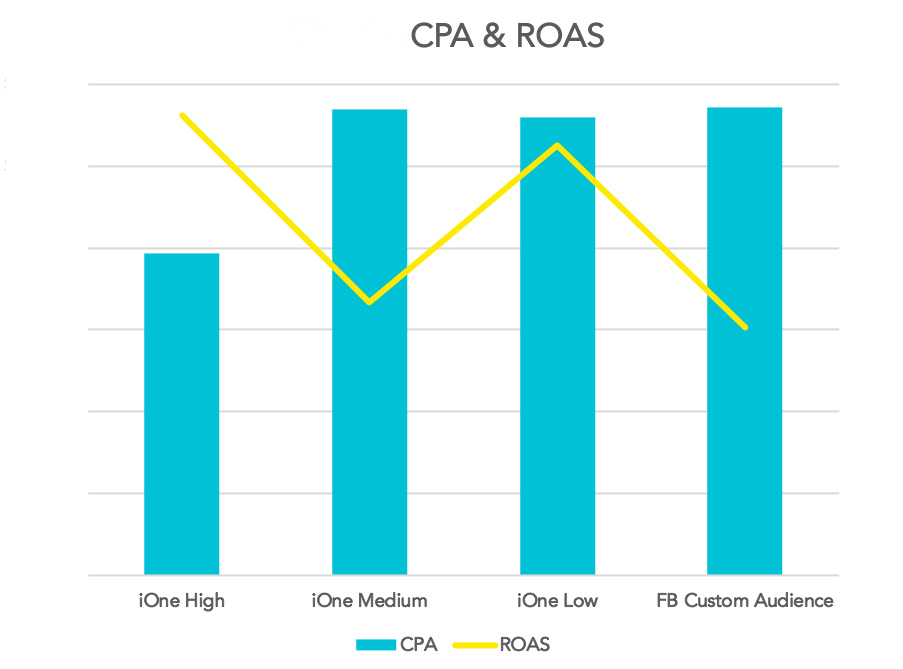Increase ROAS at Scale with IgnitionOne and Facebook Integration | Case Study
ROAS is an abbreviation for return on ad spend, an indicator in marketing that measures how much revenue a business makes for each dollar spent on advertising. ROAS is what our case study today will be about.
All in all, ROAS is pretty much the same as another indicator that’s more common to know: return on investment, or ROI. In the case of ROAS, the resources you’re spending on digital advertising is the investment on which you’re measuring returns.
As a basic understanding, ROAS measures the effectiveness of advertising efforts. The more effectively advertising messages connect with prospects, the more revenue you’ll earn from each dollar of ad spend. The higher ROAS is, the better.
In this case study, we’ll look at how 3Q Digital helped an e-commerce retailer to increase ROAS at Scale. This e-commerce retailer specializes in selling and consigning luxury fashion.
PROBLEM
The 3Q Digital team job was to scale the client’s retargeting efforts, with the ultimate objective of increasing the volume of new purchases and new-purchase ROAS.
Employing data from previous social campaigns, 3Q established that the top performing audience would be one based on all website page visitors in the last 30 days. Yet, because of the limited size of the audience, they were hesitant to significantly increase spend.
The team hypothesized that they would quickly reach their maximum volume of qualified users, and would begin serving impressions against lower-converting members. In order to scale this audience without unnecessarily saturating the retargeting audience, they turned to IgnitionOne.
IgnitionOne is a customer intelligence platform that identifies and estimates a value of each customer who engages with the client’s website. The valuation process allows marketers to target users based on their score and potential to convert; parameters used in the process include time spent on the site, items added to cart but not bought, previous history, etc.
SOLUTION
With the addition of the IgnitionOne pixel onto the client’s website, 3Q Digital were able to pull in daily user activity data. Within the IgnitionOne platform, users were labeled as either new or returning visitors, and scored based on their activity on the site, as well as position in the purchasing funnel. Additional details on what product category a user showed an affinity for, as well as geo and device type, were also provided.
In order to compare performance to the original audience, the IgnitionOne team categorized visitors looking at a 30-day window (the previous attribution top performer) and created three audience groups: high, medium, and low scores.
The IgnitionOne formula assumes that the high score audience members are the most likely to convert, while the low score users are higher in the purchasing funnel and have limited previous interactions with the retailer.
Once these audience buckets were created, we created a dynamic audience on Facebook to allow for daily updates to these buckets from IgnitionOne. (Note: since both audience types, original and IgnitionOne, were updated frequently, either through the Facebook pixel or IgnitionOne’s buckets, results were comparable in terms of accuracy).
They then used the Facebook split test tool to run two consecutive 14-day audience tests comparing performance between the original website custom audience (created through the Facebook pixel) and the three new IgnitionOne-scored audiences. This tool made it possible to create control groups so that it could be ensured that the results would be significant once the test was completed.
RESULT
IgnitionOne results proved it to be a valuable asset in scaling retargeting audiences. Because of their valuation process, the retailer was able to confidently decide to assign budget behind the top-performing audience with certainty that these were the leads who were most likely to convert, and the most efficient in terms of spend.
The IgnitionOne audiences led to:
- +50% higher CVRs
- 14% more efficient CPAs
- 57% higher ROAS
- The High Scored audience led to a significant increase in new purchases (45%) and the highest ROAS of all audiences tested.

Warning: Trying to access array offset on value of type bool in /home/dmc/public_html/wp-content/themes/DMC/single-case_study.php on line 42
Warning: Undefined array key "sidebar_ads" in /home/dmc/public_html/wp-content/themes/DMC/functions/helpers.php on line 824